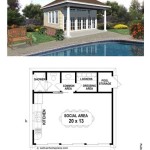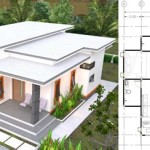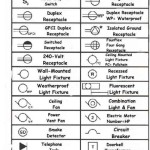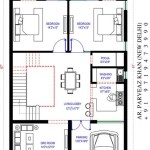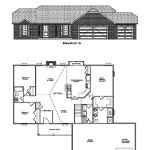Japanese Traditional House Floor Plan: A Glimpse into a Unique Architectural Style
The traditional Japanese house, known as a *Minka*, offers a fascinating study in architectural design, reflecting centuries of cultural influences and practical considerations. The floor plan of a *Minka* is characterized by distinct features that contribute to its beauty and functionality. This article explores the key elements of a traditional Japanese house floor plan, shedding light on its unique design principles and how they have shaped the living experience within these homes.
1. Open and Flexible Spaces: The Essence of *Wabi-Sabi*
One of the most striking features of a traditional Japanese house floor plan is the open and flexible nature of its spaces. Unlike Western homes, which often emphasize individual rooms with defined functions, *Minka* prioritize a sense of interconnectedness and adaptability. This concept aligns with the Japanese aesthetic philosophy of *wabi-sabi*, which embraces imperfection, transience, and the beauty found in simplicity.
The absence of walls and the use of sliding doors, known as *shoji* and *fusuma*, allow for seamless transitions between different areas within the house. These doors can be opened and closed to create various configurations, adjusting the flow of space based on the needs of the moment. This flexibility is crucial for accommodating various activities and gatherings within the home, from everyday life to special occasions.
2. The Importance of *Engawa* and *Genkan*: Blurring the Boundaries
The *engawa*, a semi-outdoor space that runs along the perimeter of the house, plays a significant role in the traditional Japanese house floor plan. It acts as a buffer zone between the interior and exterior, providing a transition space for removing shoes and transitioning between different environments. The *engawa* also offers a unique vantage point to enjoy the natural surroundings and experience the changing seasons.
The *genkan*, the entryway leading to the *engawa*, is another essential element. Traditionally, the *genkan* is elevated slightly from the rest of the floor, serving as a symbolic threshold that separates the outside world from the sanctity of the home. Stepping into the *genkan* signifies leaving behind the impurities of the outside world and entering a space meant for relaxation and contemplation.
3. The *Tatami* Mat: A Universal Unit of Measurement
The *tatami* mat, a rectangular mat woven from rush straw, is an integral part of the traditional Japanese house floor plan. Its dimensions have been standardized for centuries, with each mat measuring approximately 1.62 meters by 0.91 meters. *Tatami* mats serve both practical and symbolic purposes. They provide a comfortable and natural surface for walking and sitting, and their standardized size serves as a modular unit for measuring and dividing living spaces.
The number of *tatami* mats used in a room determines its size and function. A room with four *tatami* mats is considered a small room, while a room with eight or more *tatami* mats is considered a large room. The arrangement of *tatami* mats also reflects the hierarchy of different spaces within the house. The main living area, known as the *zashiki*, typically features a prominent square formation of *tatami* mats, signifying its significance in the home.

Traditional Japanese Home Floor Plan Cool House Plans Ideas Des Architecture Style

Traditional Japanese House Style Plans

Typical Home Layouts Differences Between Japan And Abroad

Traditional Japanese House Floor Plan Google Search Plans

Traditional Japanese Architecture Tea Ceremony Japan Experiences Maikoya

The Layout Of Ground And First Floor A Traditional Japanese House Scientific Diagram

Typical Layout Of Japanese Traditional House Schoenauer 1962 Scientific Diagram

Hachidori Floor Plan Traditional Japanese House Japan Design Home Plans

Japanese Home Design Ideas Pictures 331 Sqm Homestyler

Prefab Japanese Pavilion Traditional Architecture

